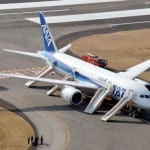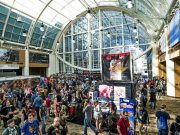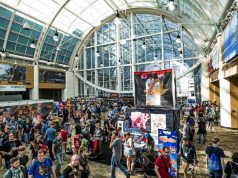 Anyone who has ever experienced first-hand the Boeing Factory Tour in Everett can’t help but marvel at the logistical expertise that brings together “just-in-time” component manufacturing from the farthest reaches of the planet.
Anyone who has ever experienced first-hand the Boeing Factory Tour in Everett can’t help but marvel at the logistical expertise that brings together “just-in-time” component manufacturing from the farthest reaches of the planet.
Just outside the production facility are parked the Boeing Dreamlifters, the largest cargo transfer planes in the world. Boeing has four of these Dreamlifters continuously circumventing the globe, ferrying parts back to mission control.
What differentiates the Dreamlifters, which are modified 747 aircraft, from the 787 Dreamliners they serve, is the degree of separation in how they were built. Just 5% of the famous 747s were made in countries outside the US compared to 30% of the Dreamliner’s manufacturing being outsourced, more than any other Boeing plane.
This factor is cited in a seminal investigation by Michael Hiltzik of the Los Angeles Times. Back in 2011, Hiltzik published a lengthy piece for the Times questioning Boeing’s over-reliance on foreign suppliers for the Dreamliner.
Last week, after a lithium ion battery on the 787 burst into flames, the U.S. Federal Aviation Administration issued an emergency order temporarily grounding the six 787s belonging to United Airlines, the lone U.S. carrier operating Boeing’s newest and most technologically advanced airliner. The Japanese carriers already had grounded their 787s, and airlines and civil aviation authorities in other countries followed suit, shutting down all 50 Dreamliners that Boeing has delivered so far.
Experts familiar with the situation note that Boeing chose to rely on a lithium cobalt oxide battery configuration for the 787, a chemistry that, while delivering powerful performance, has in the past been responsible for fires in laptop computers and cellphones. These 787 batteries are manufactured by Japan’s GS Yuasa, one of the most respected lithium-ion battery-makers in the world. Neither GS Yuasa, nor Thales, which makes the battery charging system, have commented on the recent troubles.
In its hybrid-electric Volt car, for example, GM chose to use a battery combining lithium with two ion chemistries—nickel manganese cobalt, and manganese spinel. China’s BYD uses yet a third chemistry: lithium iron phosphate. What all three have in common, experts say, is that they are far less flammable than lithium cobalt oxide. The lithium-ion batteries in those Chevy Volts used for crash-testing caught fire in 2011. General Motors engineers eventually figured out that the fires were the result of a battery coolant leak that caused electrical shorts after side-impact crash tests. GM retrofitted the car with more steel to protect the battery. No fires were ever reported on real-world roads.
 While the chemistry of battery performance undergoes excruciating analysis, the overarching issue of outsourcing has returned to the glare of cross-examination.
While the chemistry of battery performance undergoes excruciating analysis, the overarching issue of outsourcing has returned to the glare of cross-examination.
The Argument For Boeing Outsourcing Subcomponents (Pros)
Despite the regulatory difficulties, it’s not clear that outsourcing lead to the production of faulty parts, and no one is sure yet which specific parts are responsible for the most worrying electrical failures.
Lisa Reisman, editor of MetalMiner, a trade publication, thinks untested technology is to blame rather than the supply chain:
“The reality is that the Dreamliner contains multiple new systems and new materials that simply don’t have the performance history behind them (e.g. lithium-ion batteries, electrical systems, new power and distribution panels). So I think the story becomes a little less about the OEM/supplier relationships per se, and more about how a products company approaches the product development process given the competitive and pressure-filled environment companies like Boeing find themselves in.”
The Argument Against Boeing Outsourcing Subcomponents (Cons)
Outsourcing opponents say Boeing’s far-flung network of suppliers make it more difficult for the U.S.-based manufacturer to evaluate systemic problems.
The Globe and Mail’s Guy Dixon has heretofore made the case that the vast collection of components by hundred of suppliers that go into a 787 makes troubleshooting potentially more difficult. Although outsourcing has always been a part of commercial aviation, the difference now is the complexity and co-dependence of the electronics operating the aircraft.
Aerospace consultant Scott Hamilton quotes an engineer who raises similar worries: “There aren’t that many qualified outside experts (except at Airbus). Where are they going to get them from?” he says. “This is where the extreme outsourcing really causes problems. How are they going to get their suppliers to be truthful? That has always been a problem in aeronautics. The 787 organization makes it much, much worse.
With the hot light on the product development process, some claim this all would have been avoided if Boeing had paid more attention to a now-infamous memo presented by Dr. L. J. Hart-Smith, an aerospace engineer, at a 2001 conference. Hart-Smith made the case that outsourcing doesn’t cut costs and increase profits but rather does the reverse, driving profits to suppliers and increasing costs for the mother company. Only by cutting costs across the company and maintaining control of its manufacturing could Boeing succeed. He noted that rival Airbus’ outsourcing procedures, a result of the company’s multinational nature, are more efficient than Boeing’s but still fraught with inefficiencies absent in a more centralized approach.
Hart-Smith’s ideas were not adopted, and Boeing, led by then-executives Harry Stoneceipher and Allan Mullally (now Ford’s CEO), made a bet on short-term cost cutting.
Perhaps the new Boeing will become a case study of in-sourcing as it seeks to fix its problems. That seems to be the palpable conclusion to the current battery problem. It could also be the Boeing 787 Dreamliner’s return to the the flightpath of the future. [24×7]
















